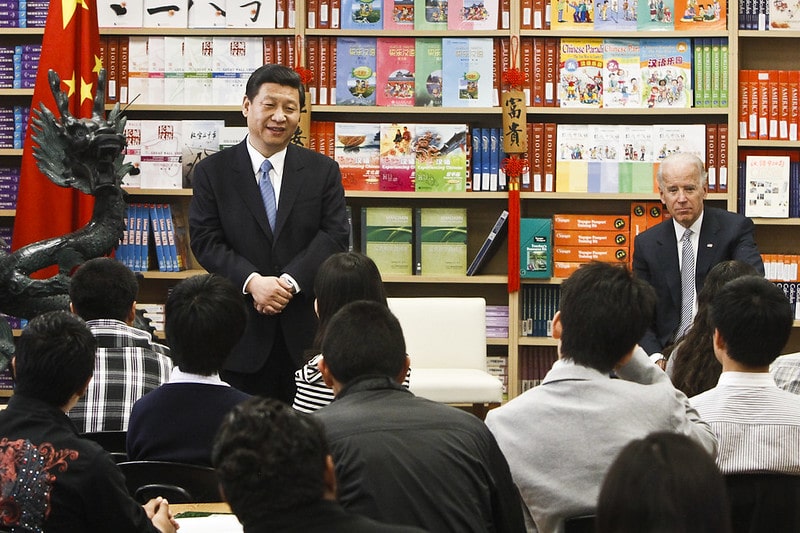With US-China relations at their lowest point in thirty years, all eyes are now on new US president Joe Biden to act swiftly on restoring a climate change partnership, following a tumultuous four years which saw numerous international disputes further aggravate tensions between the world’s two largest economies.
—
This comes after a report by the UN Environmental Programme in December last year indicated that despite a reduction in carbon emissions due to the COVID-19 pandemic, the world was still on track for a rise in temperature of 3˚C – well beyond the 1.5˚C target set in the Paris Climate Agreement.
Prior to Donald Trump withdrawing the US from the agreement in 2017, collaboration with China was crucial in efforts to develop climate sustainability under the Obama administration.
You might also like: The Cost of Subsidising Agriculture
Now, just hours after being sworn in as president, Biden has since announced the US has rejoined the climate accord. But the Trump administration’s rollbacks of over 100 climate policies could prove to be more harmful in the long-run than thought, with US greenhouse gas emissions projected to be 3% higher by 2030 than with the policies still in place.
What’s more, despite a 12% decline in US carbon dioxide emissions from 2005 to 2018, China’s emission rate has since climbed after surpassing the US’ in 2005 – now accounting for 28% of global carbon emissions as of 2020.
But even with a new leader amidst heightening tensions, what areas must be addressed to mend a once seemingly fruitful climate partnership?
Watch: Tackling climate change is a “top priority” for Biden. But what exactly is his plan?
According to Columbia University’s Center on Global Energy Policy, Biden’s and Xi’s pledge to achieve carbon neutrality by 2050 and 2060 respectively have already set the stage for hopes of restoring bilateral talks on the climate front, with practical steps for potential cooperation being outlined in three main categories.
The first is re-establishing dedication to “global climate governance.” Being the world’s greatest powers means the US and China must lead by example, following the goals put forth by the Paris Agreement of mid-century carbon neutrality and attaining a 1.5˚C scenario. Working together to lead cooperation in global forums such as G20 to address issues where they do not necessarily see eye to eye, for example accelerating a timeline on eradicating fossil fuel subsidies and enhanced data accessibility, is vital in restoring climate relations.
The second area involves rebuilding trust for future bilateral cooperation. With many daunting crises at hand, Biden faces a challenging road ahead as US president. But even as his stance on climate change is expected to mount pressure on China’s massive and heavily criticised “Belt and Road” infrastructure initiative, regaining trust is essential for achieving US-China mid-century targets in areas like zero-emission vehicles, construction and electrification.
The third category, supporting sub-national leadership on climate action, is also critical in the process of revamping US-China collaboration.
Sub-national diplomacy in climate governance refers to state, provincial or local leaders asserting political authority within foreign affairs. Vertically integrated cooperation amongst both national and sub-national governments is necessary for success in such leadership. To do this, both countries must enhance support for sub-national and non-state actors, a priority already evident throughout the Obama and Trump administrations.
As the largest emitters of greenhouse gases, the US and China remain the most vulnerable to the rapidly escalating climate threat. Though by no means easy, finding ways to work with China should be at the top of the US climate agenda. Joe Biden’s ambition of becoming a “climate president” would then depend largely on repairing a long-standing relationship with its superpower counterpart, and reimposing environmental policies both sides can willingly get behind.
Featured image by: Flickr

















